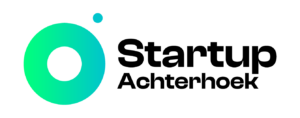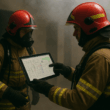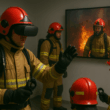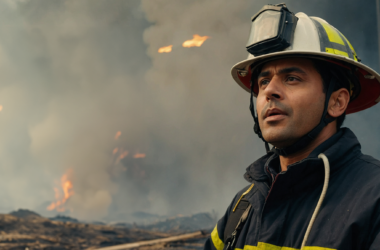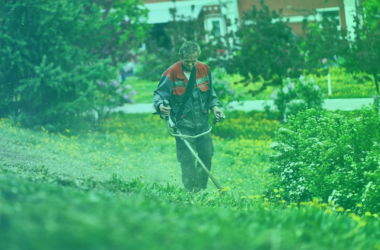Challenge: Hoe kunnen we grote groepen vrijwillige brandweermanschappen plaats- en tijdonafhankelijk actuele kennis over brandveiligheid en risicobeheersing laten opdoen op een aantrekkelijke en praktijkgerichte manier
| Deadline | 04-11-2025 voor 22:00 |
|---|---|
| Vragenuurtje | Woensdag 15 oktober 13.00u http://meet.google.com/fit-ybxh-cxp |
| Opdrachtgever | Veiligheidsregio Noord- en Oost Gelderland |
| Prijs | Deelname programma Startup in Residence; € 10.000,- vergoeding voor de pilotfase; Kans op een vervolgopdracht; Toegang tot het netwerk van mogelijk toekomstige opdrachtgevers. |
See English text below
Achtergrond
Binnen de Veiligheidsregio Noord- en Oost-Gelderland is veel actuele en waardevolle kennis beschikbaar over brandveiligheid en risicobeheersing. Deze inzichten – afkomstig van het team Risicobeheersing – worden nu met name gedeeld in presentaties en rondleidingen voor bevelvoerders.
Het bereiken van een grotere groep, namelijk de vrijwillige manschappen, is echter een grote uitdaging. Het is praktisch onhaalbaar om deze groep – verdeeld over 56 posten – fysiek en persoonlijk te trainen. Tegelijkertijd is juist bij deze doelgroep de behoefte aan inzicht in risico’s en bouwkundige brandveiligheidsmaatregelen (zoals brandscheidingen en doorvoeringen) groeiende.
De vraag is dan ook niet alleen wat er overgedragen moet worden, maar vooral hoe dit op een moderne, aantrekkelijke en schaalbare manier kan.
De uitdaging
Ontwikkel een innovatieve en aansprekende leermethode waarmee een grote groep brandweermanschappen – plaats- en tijdonafhankelijk – kennis kan ontwikkelen over actuele thema’s in risicobeheersing. De leermethode moet uitnodigen tot gebruik, aansluiten bij het kennisniveau van de doelgroep, en modulair uitbreidbaar zijn met nieuwe thema’s in de toekomst.
De eerste pilotmodule die binnen deze leermethode ontwikkeld wordt, richt zich op het herkennen en begrijpen van brandtechnische opbouw van gebouwen, zoals brandscheidingen, doorvoeringen, brandwerend glas en de impact daarvan op inzetmogelijkheden en veiligheid.
Doelstelling
De oplossing:
- Maakt het mogelijk om snel een grote groep vrijwillige manschappen te bereiken;
- Ondersteunt zelfstandig leren, los van tijd of locatie;
- Sluit aan bij de praktijk en het kennisniveau van vrijwilligers;
- Is aantrekkelijk, activerend en ervaringsgericht (bijv. via scenario-gebaseerd leren, interactieve video, of gamification);
- Is schaalbaar en modulair uit te breiden met toekomstige kennismodules;
- Levert een eerste werkende pilotmodule op binnen 3 tot 5 maanden (brandveiligheidscasus).
Functionele eisen
- Digitale leeromgeving of leerinstrument dat plaats- en tijdonafhankelijk te gebruiken is;
- Te integreren binnen de bestaande structuur van oefenavonden en/of introductietrajecten van manschappen;
- Beheersbaar voor lokale oefenleiders, zonder structurele inzet van het team Risicobeheersing;
- Mogelijkheid tot monitoring van deelname of leereffecten is een pré;
- Pilotmodule kan zelfstandig functioneren, maar vormt de basis voor toekomstige uitbreiding.
Wat is er al?
- Inhoudelijke kennis, presentaties en praktijkvoorbeelden over brandtechnische veiligheid beschikbaar via het team Risicobeheersing;
- Enthousiasme en behoefte vanuit de organisatie én vanuit de repressieve dienst;
- Eerste ideeën voor formats, waaronder interactieve video en virtuele tours;
- Mogelijkheid voor de startup om een oefenavond bij te wonen voor inspiratie en co-creatie.
Randvoorwaarden
Budget en ondersteuning worden afgestemd op basis van de voorgestelde oplossing en fasering.
De oplossing moet duurzaam inzetbaar zijn en brede toepassing in de regio mogelijk maken;
Start van de pilot (ontwikkeling en test van de eerste module) vindt plaats in overleg met de Veiligheidsregio;
Updates
25-09-2025: Updates will be published at 21th of October
21-10-2025: During the Q&A session, the following questions were asked, see english text below the challenge description:
Projectduur & scope
Vraag:
Ik zag dat het project drie tot zes maanden duurt. Wat is precies de duur en scope van het traject?
Antwoord:
Het project duurt standaard zes maanden. De vermelding van drie maanden is onjuist. Tijdens dat halve jaar werk je samen met de veiligheidsregio aan een concreet experiment of prototype.
De scope bepaal je samen – er ligt geen vast plan vooraf. In de eerste weken maak je samen een plan van aanpak waarin je afspreekt wat je wilt bereiken in die periode.
Doel van het project
Vraag:
Wat is het doel van deze samenwerking?
Antwoord:
Het doel is experimenteren. Je werkt aan een concreet concept dat waarde toevoegt aan de brandweerpraktijk. Als dat bevalt, kan er een vervolgopdracht of implementatie uit voortkomen.
Selectie & samenwerking
Vraag:
Er mogen vijf partijen pitchen. Hoeveel partijen krijgen uiteindelijk het project gegund?
Antwoord:
In principe kiezen we één partij om verder mee te werken.
Maar als er twee uitzonderlijk kansrijke partijen zijn, kan het voorkomen dat we met beiden doorgaan. Tot nu toe is dat nog niet gebeurd.
Leermethoden & huidige uitdagingen
Vraag:
Hebben jullie al leermethoden of technologieën gebruikt in eerdere projecten?
Antwoord:
We hebben geëxperimenteerd met verschillende methoden, bijvoorbeeld VR-trainingen.
Ons grootste probleem is schaal: we hebben 56 posten met elk circa 20 vrijwilligers.
We willen hen kunnen bereiken zonder overal fysiek aanwezig te moeten zijn.
Er is dus behoefte aan slimme, lokaal inzetbare leermiddelen die niet per se een oefenavond op locatie vereisen.
Type training en inhoud
Vraag:
Op wat voor soort handelingen of scenario’s richt de training zich?
Antwoord:
De aanleiding is een nascholing voor bevelvoerders over brandveiligheid in gebouwen (zoals brandwerende scheidingen). We willen die kennis nu ook bij de manschappen krijgen – de mensen die als eerste naar binnen gaan. De training moet dus helpen om praktische kennis lokaal te oefenen, zonder altijd naar een oefencentrum te hoeven.
Over bestaande oplossingen
Vraag:
Hebben jullie al gekeken naar oplossingen zoals Flash Group XR?
Antwoord:
Nee, daar hebben we nog niet naar gekeken. We staan open voor suggesties.
Als een bedrijf iets vergelijkbaars biedt, kunnen ze zich gewoon aanmelden.
Vraag:
Is “risk awareness bij het betreden van een gebouw” slechts een voorbeeld, of is dat echt de kern van de vraag?
Antwoord:
Dat is de basis van de huidige uitdaging.
We willen daar in ieder geval mee starten, maar het systeem mag breder inzetbaar zijn voor andere scenario’s.
Succescriteria
Vraag:
Wat zien jullie als een geslaagd resultaat na zes maanden?
Antwoord:
Er hoeft nog geen kant-en-klaar product te zijn.Belangrijk is dat er een werkend prototype of mini-pilot ligt waarmee we kunnen beoordelen of het in de praktijk door te ontwikkelen is.
De basis moet er staan, zodat we er zelf verder mee kunnen. Een succesvolle pilot is er één waarmee je kunt laten zien: “het werkt, dit is veelbelovend.”
Perfectie is niet nodig; bewijs van werking wél.
Omvang van de pilot
Vraag:
Hoe groot moet zo’n pilot zijn? Eén training? Meerdere scenario’s?
Antwoord:
Dat hangt af van wat nodig is om het te beoordelen.
Eén goed uitgewerkt scenario dat makkelijk uit te breiden is, kan voldoende zijn.
Meerdere scenario’s mag, maar is geen vereiste.
Locatie & deelname-eisen
Vraag:
Is het belangrijk dat een startup gevestigd is in Gelderland of de Achterhoek?
Antwoord:
Nee, dat is niet verplicht.
We zoeken gewoon de beste innovaties, ongeacht herkomst.
Wel is het belangrijk dat je eens per maand live aanwezig kunt zijn, want niet alles gebeurt online.
Budget & vervolgfinanciering
Vraag:
Kun je iets zeggen over het budget als de pilot slaagt?
Antwoord:
Nog niet concreet.
Als het project geschikt blijkt voor alle posten, dan kan het regiobreed worden uitgerold, en dan wordt het budget vanzelf groter. Maar dat hangt af van de resultaten. Daarnaast willen we dit programma opschalen naar meerdere veiligheidsregio’s. Dus als jouw oplossing werkt, kan het ook landelijk worden opgepakt. Er is geen vast plafond – alles hangt af van impact en potentie.
Operationeel vs. mentale training
Vraag:
Staan jullie ook open voor niet-operationele trainingen, bijvoorbeeld gericht op mentale weerbaarheid of human factors?
Antwoord:
Dat is interessant, maar niet de hoofdprioriteit.
De focus ligt echt op operationele handelingen: wat doe je als brandweervrijwilliger in actie.
English version
Background
Within the North and East Gelderland Safety Region (VNOG), a great deal of current and valuable knowledge is available about fire safety and risk management. These insights — developed by the Risk Management team — are currently shared mainly through presentations and guided tours for commanding officers.
However, reaching a larger group — namely the volunteer firefighters — remains a major challenge. It is practically impossible to train this group physically and in person, as they are spread across 56 fire stations. At the same time, this target group has an increasing need for understanding risks and building-related fire safety measures (such as fire separations and penetrations).
The question, therefore, is not only what knowledge should be transferred, but especially how this can be done in a modern, engaging, and scalable way.
The Challenge
Develop an innovative and engaging learning method that enables a large group of firefighters — independent of time and place — to gain knowledge about current topics in risk management.
The learning method should be:
- Inviting and easy to use,
- Aligned with the target group’s knowledge level,
- Modular and expandable with new topics in the future.
The first pilot module to be developed within this learning method will focus on recognizing and understanding the fire safety structure of buildings, including fire separations, penetrations, fire-resistant glass, and the impact these elements have on operational possibilities and safety.
Objectives
The solution should:
- Enable rapid reach of a large group of volunteer firefighters;
- Support self-directed learning, independent of time or location;
- Reflect practical situations and align with volunteers’ knowledge levels;
- Be engaging, activating, and experiential (e.g., through scenario-based learning, interactive video, or gamification);
- Be scalable and modular, allowing expansion with future learning topics;
- Deliver a first working pilot module within 3 to 5 months (focused on a fire safety case).
Functional Requirements
- A digital learning environment or learning tool that can be used anytime and anywhere;
- Can be integrated into existing training evenings and/or onboarding programs for firefighters;
- Manageable by local training leaders without structural involvement of the Risk Management team;
- The ability to monitor participation or learning outcomes is an advantage;
- The pilot module should function independently but form the basis for future expansion.
What Is Already in Place?
- Existing content, presentations, and practical examples on fire safety provided by the Risk Management team;
- Enthusiasm and demand from both the organization and the firefighting service;
- Initial ideas for learning formats, including interactive video and virtual tours;
- The possibility for the startup to attend a training evening for inspiration and co-creation.
Conditions
The pilot (development and testing of the first module) will be initiated in consultation with the Safety Region.
Budget and support will be determined based on the proposed solution and development phases.
The solution must be sustainably deployable and applicable on a regional scale.
Q&A:
Project Duration & Scope
Question:
I saw that the project lasts three to six months. What is the exact duration and scope of the program?
Answer:
The project officially lasts six months. The mention of three months is incorrect. During this half-year, you’ll work together with the Safety Region on a concrete experiment or prototype.
The scope is defined jointly — there’s no fixed plan in advance. In the first few weeks, you’ll create an action plan together that outlines what you aim to achieve during the project period.
Project Objective
Question:
What is the goal of this collaboration?
Answer:
The goal is experimentation. You’ll work on a concrete concept that adds value to the firefighting practice. If the results are promising, this may lead to a follow-up assignment or implementation.
Selection & Collaboration
Question:
Five parties are allowed to pitch. How many will ultimately be selected?
Answer:
In principle, we select one party to continue with.
However, if two proposals are exceptionally strong, it’s possible that both will move forward — though this hasn’t happened yet.
Learning Methods & Current Challenges
Question:
Have you used learning methods or technologies in previous projects?
Answer:
We’ve experimented with various methods, such as VR training.
Our biggest challenge is scale: we have 56 fire stations, each with about 20 volunteers.
We want to reach them without having to be physically present everywhere.
So there’s a clear need for smart, locally deployable learning tools that don’t necessarily require an on-site training evening.
Type of Training and Content
Question:
What kind of actions or scenarios does the training focus on?
Answer:
The starting point is a refresher course for commanding officers on fire safety in buildings (e.g., fire-resistant separations). We now want to transfer that knowledge to the firefighters — the people who enter buildings first.
The training should help them practice practical knowledge locally, without always needing a central training facility.
Existing Solutions
Question:
Have you already looked into solutions like Flash Group XR?
Answer:
No, not yet. We’re open to suggestions.
If a company offers something similar, they are welcome to apply.
Question:
Is “risk awareness when entering a building” just an example, or is that really the core of the challenge?
Answer:
That’s the foundation of the current challenge.
We want to start with that, but the system should be adaptable to other scenarios as well.
Success Criteria
Question:
What do you consider a successful result after six months?
Answer:
A fully finished product isn’t required.
What matters is having a working prototype or mini-pilot that allows us to assess whether it’s suitable for further development in practice.
The foundation should be solid enough for us to build on.
A successful pilot is one that demonstrates: “It works — this is promising.”
Perfection isn’t necessary; proof of effectiveness is.
Scope of the Pilot
Question:
How large should the pilot be? One training? Multiple scenarios?
Answer:
That depends on what’s needed for evaluation.
One well-developed scenario that’s easy to expand can be sufficient.
Multiple scenarios are allowed, but not required.
Location & Participation Requirements
Question:
Is it important for a startup to be based in Gelderland or the Achterhoek region?
Answer:
No, that’s not required.
We’re simply looking for the best innovations, regardless of origin.
However, it’s important that you can be present in person once a month, since not everything takes place online.
Budget & Follow-up Funding
Question:
Can you share anything about the budget if the pilot is successful?
Answer:
Not concretely yet.
If the project proves suitable for all stations, it could be rolled out region-wide, which would naturally increase the budget. But that depends on the results.
We also aim to scale this program to multiple safety regions nationwide.
So if your solution works, it could be adopted on a national level.
There’s no fixed budget cap — everything depends on impact and potential.
Operational vs. Mental Training
Question:
Are you also open to non-operational training, such as those focused on mental resilience or human factors?
Answer:
That’s interesting, but not the main priority.
The focus is really on operational actions — what firefighters do in action.
